Prehospital Emergency Care 11th Edition by Joseph Mistovich, ISBN-13: 978-0134704456
Original price was: $75.00.$24.99Current price is: $24.99.
Prehospital Emergency Care 11th Edition by Joseph Mistovich, ISBN-13: 978-0134704456
[PDF eBook eTextbook]
- Publisher: Pearson; 11th edition (October 17, 2017)
- Language: English
- 1552 pages (Large File: 40MB)
- ISBN-10: 0134704452
- ISBN-13: 978-0134704456
For courses in Prehospital Emergency Care.
The most complete resource for EMT training.
Comprehensive in scope and student-friendly, Prehospital Emergency Care conveys the “WHY” behind the signs and symptoms students observe and the services they provide. Through a solid foundation of pathophysiology, students will learn to quickly identify immediate life threats and deliver excellent emergency care.
The 11th edition continues to meet and exceed the National EMS Education Standards. It has been thoroughly updated to reflect the latest and best practices for emergency medical services in the US, including conforming to the latest American Heart Association guidelines. Spine motion restriction, naloxone administration, sepsis, stroke screening tools, human trafficking, active shooter, domestic violence, and clinical decision-making with regard to oxygen administration are just a few of the updates readers will discover in this hallmark text.
Table of Contents:
Prehospital Emergency Care
Dedication
Detailed Contents
Key Features
EMT Skills
Preface
Be Prepared
It All Makes Sense
Features
In Your EMS Career
Pathophysiology
The Importance of Patient Assessment
Using Medical Terminology
As You Begin Your EMS Career
What’s New in the 11th Edition?
Medical Editor
Contributing Writers
Reviewers
Photo Acknowledgments
Organizations
Photo Coordinators/Subject Matter Experts
Models
About the Authors
Welcome to Prehospital Emergency Care
A Guide to Key Features
A Guide to the Student Workbook
MyLab BRADY
Part 1 Preparatory and Public Health
Chapter 1 Emergency Medical Care Systems, Research, and Public Health
Objectives
Key Terms
The Dispatch
En Route
Upon Arrival
Introduction
The Emergency Medical Services System
A Brief History
Technical Assistance Program Assessment Standards
Access to the EMS System
Types of EMS Services
Levels of Training
The Health Care System
The EMT
Roles and Responsibilities
Personal Safety and the Safety of Others
Patient Assessment and Emergency Care
Safe Lifting and Moving
Transport and Transfer of Care
Record Keeping and Data Collection
Patient Advocacy
Professional Attributes
Appearance
Knowledge and Skills
Physical Demands
Personal Traits
Maintenance of Certification and Licensure
EMS System Organization and Standards
State EMS Agency Role
Medical Oversight of EMS
The Medical Director, Protocols, and Standing Orders
Quality Improvement
Patient Safety
EMS Research
Evidence-Based Guidelines
Public Health
Mobile Integrated Healthcare and Community Paramedicine
Chapter Review
Summary
Scene Size-Up
Primary Assessment
Secondary Assessment
Reassessment
In Review
Critical Thinking
Chapter 2 Workforce Safety and Wellness of the EMT
Objectives
Key Terms
The Dispatch
Upon Arrival
Introduction
Emotional Aspects of Emergency Care
Death and Dying
Five Emotional Stages
Dealing with the Dying Patient, Family, and Bystanders
High-Stress Situations
Stress Reactions
Common Signs and Symptoms of Stress Reactions
Stress Management
Make Lifestyle Changes
Keep Balance in Your Life
Recognize the Response of Your Family and Friends
Make Changes in Your Work Environment
Seek Professional Help
Critical Incident Stress Management
Scene Safety
Protecting Yourself from Disease
How Diseases Spread
Standard Precautions
Hand Washing
Personal Protective Equipment
Additional Guidelines
Immunizations
Reporting Exposure
Infectious Diseases of Concern to the EMT
Hepatitis B
Hepatitis C
Tuberculosis
Human Immunodeficiency Virus (HIV)/Acquired Immune Deficiency Syndrome (AIDS)
Severe Acute Respiratory Syndrome
West Nile Virus
Ebola Virus Disease
Zika Virus Disease
Multidrug-Resistant Organisms
Protecting Yourself from Accidental and Work-Related Injury
Hazardous Materials
Rescue Situations
High-Visibility Vest
Violence and Crime
Wellness Principles
Physical Well-Being
Physical Fitness
Cardiovascular Endurance
Muscle Strength
Muscle Endurance
Muscle Flexibility
Body Composition
Adequate Sleep
Smoking Cessation
Alcohol- and Drug-Related Issues
Mental Well-Being
Chapter Review
Summary
Scene Size-Up
Patient Assessment
Critical Incident Follow-Up
In Review
Critical Thinking
Chapter 3 Medical, Legal, and Ethical Issues
Objectives
Key Terms
The Dispatch
Upon Arrival
Introduction
The Scope of Practice
Legal Duties
Duty to Act
Good Samaritan Laws
Other Legal Protections
Medical Direction
Ethical Responsibilities
Issues of Patient Consent and Refusal
Types of Consent
Advance Directives
Refusing Treatment
Capacity
Protecting Yourself in Refusal Situations
Other Legal Aspects of Emergency Care
Negligence
Duty to Act
Breach of Duty to Act
Damages
Proximate Cause
Intentional Tort
Abandonment
Assault
Battery
False Imprisonment or Kidnapping
Defamation
Confidentiality
Health Insurance Portability and Accountability Act
COBRA and EMTALA
Protecting Yourself in Transport and Transfer Situations
Special Situations
Donors and Organ Harvesting
Medical Identification Insignia
Medical Alert Tattoo
Recognizing Death in the Field
Crime Scenes
Special Reporting Situations
Baby Safe-Haven Laws
Chapter Review
Summary
Scene Size-Up
Patient Assessment
An Ethical Obligation
In Review
Critical Thinking
Chapter 4 Documentation
Objectives
Key Terms
The Dispatch
Upon Arrival
Introduction
Functions of the Prehospital Care Report
Continuity of Medical Care
Administrative Uses
Legal Document
Educational and Research Uses
Evaluation and Continuous Quality Improvement
Collection of Data in Prehospital Care Reports
PCR Formats
PCR Data
The Minimum Data Set
Administrative Information
Patient Demographics and Other Patient Data
Vital Signs
Patient Narrative
Treatment
Medical Abbreviations
Legal Concerns
Confidentiality
Distribution
Refusal of Treatment
Falsification
Correcting Errors
Transfer-of-Care Report
Multiple-Casualty Incidents
Special Reports
Alternative Documentation Methods
SOAP
CHART
CHEATED
Chapter Review
Summary
Scene Size-Up
Primary Assessment
Secondary Assessment
Documentation
In Review
Critical Thinking
Chapter 5 Communication
Objectives
Key Terms
The Dispatch
Upon Arrival
Introduction
EMS Communications Systems
Components of an Emergency Communications System
Base Station
Land Mobile Radio Systems
Mobile Radios (Transmitter/Receivers)
Portable Radios (Transmitter/Receivers)
Repeaters
Digital Equipment
Cellular (Wireless) Phones
Telemetry
Land Mobile Satellite Communications
Broadcast Regulations
System Maintenance
Communicating Within the System
Ground Rules for Radio Communication
Phone/Cellular Phone Communication
Communicating with Dispatch
Communicating with Health Care Professionals
Communicating with Medical Direction
Communicating with the Receiving Facility
The Oral Report
Transferring Patient Care to Another EMS Provider
Team Communication and Dynamics
Taking Charge
Radio Codes
Times
Radio Terms
Therapeutic Communication
Principles of Patient Communication
The Communication Process
Communication Responses
Communicating with the Patient
Patient Contact
The Patient Interview
Nonverbal Communication
Asking Questions
Considerations in Interviewing
Special Circumstances
Transcultural Considerations
Considerations for Elderly Patients
Considerations for Children
Chapter Review
Summary
Scene Size-Up
Primary Assessment
Secondary Assessment
Reassessment
In Review
Critical Thinking
Chapter 6 Lifting and Moving Patients
Objectives
Key Terms
The Dispatch
Upon Arrival
Introduction
Body Mechanics for Safe Lifting
Four Basic Principles
Posture and Fitness
Communication and Teamwork
General Guidelines for Lifting and Moving
The Power Lift
The Squat Lift
One-Handed Equipment-Carrying Technique
Reaching
Pushing and Pulling
Lifting and Moving Patients
Emergency Moves
The Armpit-Forearm Drag
The Shirt Drag
The Blanket Drag
Urgent Moves
Rapid Extrication
Self-Extrication
Nonurgent Moves
Direct Ground Lift
Extremity Lift
Direct Carry Method
Draw Sheet Method
Packaging For Transportation
Equipment
Wheeled Stretcher
Bariatric Stretchers and Devices
Portable Stretcher
Stair Chair
Tracked Stair Chair.
Backboard
Scoop Stretcher
Basket Stretcher
Flexible Stretcher
Patient Positioning
Packaging Patients for Air Transport
General Guidelines for Carrying a Patient Using a Backboard, Portable Stretcher, or Flexible Stretcher
Two-Person Carry
Four-Person Carry
Carrying a Supine Patient on Stairs
Neonatal Isolette
Chapter Review
Summary
Scene Size-Up
Patient Assessment
Lifting and Moving the Patient
Reassessment
In Review
Critical Thinking
Part 2 Anatomy, Physiology, and Medical Terminology
Chapter 7 Anatomy, Physiology, and Medical Terminology
Objectives
Key Terms
The Dispatch
Upon Arrival
Introduction
Anatomical Terms
Body Systems
The Musculoskeletal System
The Skeletal System
The Skull.
The Spinal Column.
The Thorax.
The Pelvis.
The Lower Extremities.
The Upper Extremities.
The Joints.
Bone Injury
The Muscular System
Skeletal Muscle.
Smooth Muscle.
Cardiac Muscle.
The Respiratory System
Respiratory System Functions
Respiratory System Structures: The Airway
Nose and Mouth.
Pharynx.
Nasopharynx.
Oropharynx.
Laryngopharynx (hypopharynx).
Larynx.
Trachea.
Bronchi.
Lungs.
Diaphragm.
Anatomy in Infants and Children
Mechanics of Ventilation
Physiology of Respiration
Adequate and Inadequate Breathing
The Circulatory System
Basic Anatomy
The Heart.
The Arteries.
The Arterioles.
The Capillaries.
The Venules.
The Veins.
Composition of the Blood
Physiology of Circulation
Transport of Gases in the Blood
Cell Metabolism.
The Nervous System
Structural Divisions of the Nervous System
The Central Nervous System.
The Peripheral Nervous System.
Functional Divisions of the Nervous System
The Voluntary Nervous System.
The Autonomic Nervous System.
Consciousness and Unconsciousness
Consciousness.
Unconsciousness.
The Endocrine System
Epinephrine and Norepinephrine
The Integumentary System (Skin)
The Digestive System
Basic Anatomy
Digestive Process
The Urinary or Renal System
The Reproductive System
Medical Terminology
Medical Words and Word Parts
Chapter Review
Summary
Scene Size-Up
Patient Assessment
Communication and Documentation
In Review
Critical Thinking
Part 3 Pathophysiology
Chapter 8 Pathophysiology
Objectives
Key Terms
The Dispatch
Upon Arrival
Introduction
Cellular Metabolism
Aerobic Metabolism
Anaerobic Metabolism
Sodium/Potassium Pump Failure
Components Necessary for Adequate Perfusion
Composition of Ambient Air
Patency of the Airway
Nasopharynx
Oropharynx
Epiglottis
Larynx
Trachea, Bronchi, and Bronchioles
Respiratory Compromise Associated with Mechanics of Ventilation
Boyle’s Law Applied to Ventilation
Accessory Muscles
Accessory Muscles of Exhalation
Compliance and Airway Resistance
Pleural Space
Minute Ventilation
Alveolar Ventilation
Regulation of Ventilation
Chemoreceptors
Central Chemoreceptors
Peripheral Chemoreceptors
Hypoxic Drive
Lung Receptors
Irritant Receptors
Stretch Receptors
J-Receptors
Respiratory Centers in the Brainstem
Ventilation/Perfusion Ratio
Pressure Imbalances
Ventilatory Disturbances
Perfusion Disturbances
Transport of Oxygen and Carbon Dioxide by the Blood
Oxygen Transport
Carbon Dioxide Transport
Alveolar/Capillary Gas Exchange
Cell/Capillary Gas Exchange
Blood Volume
Composition of Blood
Distribution of Blood
Hydrostatic Pressure
Plasma Oncotic Pressure
Pump Function of the Myocardium
Cardiac Output
Heart Rate
Stroke Volume
Systemic Vascular Resistance (SVR)
Systemic Vascular Resistance Effect on Pulse Pressure
Microcirculation
Blood Pressure
Regulation of Blood Pressure by Baroreceptors
Baroreceptor Response to an Increase in Blood Pressure
Baroreceptor Response to a Decrease in Blood Pressure
Vasomotor Response to a Change in Blood Pressure
Regulation of Blood Pressure by Chemoreceptor Reflexes
Chapter Review
Summary
Scene Size-Up
Patient Assessment
In Review
Critical Thinking
Part 4 Life Span Development
Chapter 9 Life Span Development
Objectives
Key Terms
The Dispatch
Upon Arrival
Introduction
Life Span Development
Neonates and Infants
Vital Signs
Physiologic Changes
Psychosocial Changes
Toddlers and Preschool-Age Children
Vital Signs
Physiologic Changes
Psychosocial Changes
School-Age Children
Vital Signs
Physiologic Changes
Psychosocial Changes
Adolescence
Vital Signs
Physiologic Changes
Psychosocial Changes
Early Adulthood
Vital Signs
Physiologic Changes
Psychosocial Changes
Middle Adulthood
Vital Signs
Physiologic Changes
Psychosocial Changes
Late Adulthood
Vital Signs
Physiologic Changes
Psychosocial Changes
Chapter Review
Summary
Scene Size-Up
Patient Assessment
Transport and Transfer of Care
In Review
Critical Thinking
Part 5 Airway Management, Artificial Ventilation, and Oxygenation
Chapter 10 Airway Management, Artificial Ventilation, and Oxygenation
Objectives
Key Terms
The Dispatch
Upon Arrival
Introduction
Respiration
Respiratory System Review
Anatomy of the Respiratory System
The Upper Airway
Nose and Mouth
Pharynx
Epiglottis
Larynx
The Lower Airway
Trachea
Bronchi and Bronchioles
Lungs
Diaphragm
Mechanics of Ventilation (Pulmonary Ventilation) Review
Respiratory Physiology Review
Hypoxemia
Hypoxia
Alveolar/Capillary Exchange (External Respiration)
Capillary/Cellular Exchange (Internal Respiration)
Pathophysiology of Pulmonary Ventilation and External and Internal Respiration
Airway Anatomy in Infants and Children
Mouth and Nose
Pharynx
Trachea and Lower Airway
Cricoid Cartilage
Chest Wall and Diaphragm
Oxygen Reserves
Airway Assessment
Airway Functions and Considerations
Abnormal Upper Airway Sounds
Opening the Mouth
Opening the Airway
Head-Tilt, Chin-Lift Maneuver
Head-Tilt, Chin-Lift Maneuver in Infants and Children
Jaw-Thrust Maneuver
Jaw-Thrust Maneuver in Infants and Children
Positioning the Patient for Airway Control
Suctioning
Standard Precautions During Suctioning
Suction Equipment
Mounted Suction Devices
Portable Suction Devices
Suction Catheters
Suctioning Technique
Special Considerations When Suctioning
Airway Adjuncts
Oropharyngeal Airway
Inserting the Oropharyngeal Airway
Nasopharyngeal Airway
Inserting the Nasopharyngeal Airway
Assessment of Breathing
Relationship of Volume and Rate in Breathing Assessment
Tidal Volume and Minute Volume
Alveolar Ventilation
Assessing for Adequate Breathing
Adequate Breathing
Inadequate Breathing
Signs of Inadequate Breathing
Deciding Whether or Not to Assist Ventilation
Techniques of Artificial Ventilation
Differences Between Normal Spontaneous Ventilation and Positive Pressure Ventilation
Basic Considerations
Standard Precautions
Adequate Ventilation
Inadequate Ventilation
Cricoid Pressure, BURP, and ELM
Cricoid Pressure
BURP
ELM
Other Basic Ventilation Considerations
Mouth-to-Mouth Ventilation
Mouth-to-Mouth and Mouth-to-Nose Technique
Mouth-to-Mask and Bag-Valve Ventilation: General Considerations
Ventilation Volumes and Duration of Ventilation
Ventilating a Pulseless Patient with an Advanced Airway in Place
Gastric Inflation
Mouth-to-Mask Ventilation
Mouth-to-Mask Technique—No Suspected Spinal Injury
Mouth-to-Mask Technique—Suspected Spinal Injury
Ineffective Ventilation
Bag-Valve-Mask Ventilation
Bag-Valve-Mask Technique—No Suspected Spinal Injury
Two-Person BVM Technique
One-Person BVM Technique
Bag-Valve-Mask Problems
Bag-Valve-Mask Technique—Suspected Spinal Injury
Flow-Restricted, Oxygen-Powered Ventilation Device (FROPVD)
FROPVD Techniques
FROPVD Problems
Automatic Transport Ventilator (ATV)
ATV Recommended Features
ATV Techniques
Ventilation of the Patient Who Is Breathing Spontaneously
Continuous Positive Airway Pressure (CPAP)
How CPAP Improves Ventilation and Oxygenation
CPAP and Children
Criteria and Indications for CPAP
Contraindications for CPAP
CPAP Administration Procedure
Assessing the Patient’s Response to CPAP
BiPAP
Hazards of Overventilation
Special Considerations in Airway Management and Ventilation
A Patient with a Stoma or Tracheostomy Tube
Bag-Valve-Mask-to-Tracheostomy-Tube Ventilation
Bag-Valve-Mask-to-Stoma Ventilation
Mouth-to-Stoma Ventilation
Infants and Children
Patients with Facial Injuries
Foreign Body Airway Obstruction
Dental Appliances
Oxygen Therapy
Oxygen Cylinders
Duration of Flow
Safety Precautions
Pressure Regulators
Oxygen Humidifiers
Clinical Decision Making Regarding Oxygen Administration
Indications for Oxygen Administration
Variations in SpO2 Goals for Medical, Trauma, and Other Special Consideration Patients
Hazards of Oxygen Administration
Oxygen Administration Procedures
Terminating Oxygen Therapy
Transferring the Oxygen Source: Portable to On-Board
Oxygen Delivery Equipment
Nonrebreather Mask
Applying the Nonrebreather Mask
Nasal Cannula
Applying the Nasal Cannula
Other Oxygen Delivery Devices
Simple Face Mask
Partial Rebreather Mask
Venturi Mask
Tracheostomy Mask
Chapter Review
Summary
Scene Size-Up
Patient Assessment
In Review
Critical Thinking
Part 6 Assessment
Chapter 11 Vital Signs, Monitoring Devices, and History Taking
Objectives
Key Terms
The Dispatch
Upon Arrival
Introduction
Gathering Patient Information
Vital Signs
Respiration
Respiratory Rate
Respiratory Quality
Respiratory Rhythm
Pulse
Location of Pulses
Heart Rate
Pulse Quality and Rhythm
Skin
Skin Color
Skin Temperature
Skin Condition
Capillary Refill
Pupils
Blood Pressure
Methods of Measuring Blood Pressure
Testing Orthostatic Vital Signs
Vital Sign Reassessment
Monitoring Equipment
Pulse Oximeter: Oxygen Saturation Assessment
Indications for Pulse Oximetry
Limitations of the Pulse Oximeter
Procedure for Determining the SpO2 Reading
Noninvasive Blood Pressure Monitor
Procedure for Noninvasive Blood Pressure Monitoring
Capnometry (EtCO2 Monitor)
Preparing to Take the History
Gain Control of the Scene
Achieve a Smooth Transition of Care
Reduce the Patient’s Anxiety
Bring Order to the Environment
Introduce Yourself
Gain Patient Consent
Position Yourself
Use Communication Skills
Be Courteous
Use Touch When Appropriate
Maintain Control
Taking the History
Statistical and Demographic Information
Current Health Status
Techniques for Taking a Patient History
Note Taking
Types of Questions
Active Listening Techniques
Standardized Approach to History Taking
The SAMPLE History
Assessing Patient Complaints: OPQRST
Sensitive Topics or Special Challenges
Sensitive Topics
Special Challenges
Chapter Review
Summary
Scene Size-Up
Patient Assessment
In Review
Critical Thinking
Chapter 12 Scene Size-Up
Objectives
Key Terms
The Dispatch
Upon Arrival
Introduction
Violence Toward EMS Personnel
Take the Necessary Standard Precautions and Other Personal Protection Precautions
Determine Scene Safety
Consider Dispatch Information
Consider the Need for Additional or Specialized Resources
Consider Scene Characteristics
Crash Scenes
Protection from Moving Traffic
Other Rescue Scenes
Unstable Surfaces and Slopes
Ice
Water
Toxic Substances and Low-Oxygen Areas
Clandestine Drug Operations
Crime Scenes
Arriving at the Scene
Studying the Crowd
Approaching the Scene
At the Patient’s Side
Barroom Scenes
Car Passengers
Protect the Patient
Protect Bystanders
Control the Scene
Maintain Situation Awareness
Determine the Nature of the Problem
Determine the Mechanism of Injury
Falls
Motor Vehicle Crashes
Motorcycle Crashes
Recreational Vehicle Crashes
Penetrating Trauma
Blast Injuries
Determine the Nature of the Illness
Determine the Number of Patients
Chapter Review
Summary
Scene Size-Up
Patient Assessment
In Review
Critical Thinking
Chapter 13 Patient Assessment
Objectives
Key Terms
Overview
Call One—A Trauma Patient
The Dispatch
Upon Arrival
Call Two—A Medical Patient
The Dispatch
Upon Arrival
Introduction
Form a General Impression of the Patient
Introduction to Spine Motion Restriction
Determine Whether the Patient Is Injured or Ill
Obtain the Chief Complaint
Identify Immediate Life Threats During the General Impression
Perform Spine Motion Restriction
Position the Patient for Assessment
Assess Level of Consciousness (Mental Status)
Assess the Level of Responsiveness
Alertness and Orientation
Responsiveness to Verbal Stimulus
Responsiveness to Painful Stimulus
Problems with Some Types of Painful Stimuli
Unresponsiveness
Document the Level of Responsiveness
Assess the Airway
Determine Airway Status
In the Responsive Patient
In the Unresponsive or Severely Altered Mental Status Patient
Open the Airway
Indications of Partial Airway Occlusion
Snoring
Gurgling
Crowing and Stridor
Assess Breathing
Assess Rate and Quality of Breathing
Look
Listen and Feel
Absent or Inadequate Breathing
Adequate Breathing
Assess Oxygenation
Oxygen Therapy in the Patient with Adequate Breathing
Assess Circulation
Assess the Pulse
Identify Major Bleeding
Assess Perfusion
Skin Color
Skin Temperature
Skin Condition
Capillary Refill
Shock (Hypoperfusion)
Establish Patient Priorities
Overview of Secondary Assessment: Anatomic and Body Systems Approaches, Vital Signs, and History
Performing the Secondary Assessment: An Anatomic Approach
Assess the Head
Ears
Face
Eyes
Nose
Mouth
Assess the Neck
Assess the Chest
Auscultation
Assess the Abdomen
Assess the Pelvis
Assess the Lower Extremities
Pulses
Motor Function
Sensation
Assess the Upper Extremities
Pulses
Motor Function
Sensation
Assess the Posterior Body
Performing the Secondary Assessment: A Body Systems Approach
Assess Vital Signs
Obtain a History
Reevaluate the Mechanism of Injury
Significant Mechanisms of Injury
Special Considerations for Infants and Children
Rapid Secondary Assessment: Trauma Patient with Significant Mechanism of Injury, Altered Mental Status, Multiple Injuries, or Critical Finding (Unstable)
Continue Spine Motion Restriction
Consider an Advanced Life Support Request
Reconsider the Transport Decision
Reassess Mental Status
Perform a Rapid Secondary Assessment
Assess the Head
Scalp and Skull
Face
Ears
Pupils
Nose
Mouth
Assess the Neck
Apply a Cervical Collar
Assess the Chest
Assess the Abdomen
Assess the Pelvis
Assess the Extremities
Assess the Posterior Body
Assess Vital Signs
Blood Glucose Test
Obtain a History
Prepare the Patient for Transport
Provide Emergency Care
Trauma Score
Modified Secondary Assessment: Trauma Patient with no Significant Mechanism of Injury, Altered Mental Status, Multiple Injuries, or Critical Finding (Stable)
Perform a Modified Secondary Assessment
Obtain Vital Signs and History
Perform a Rapid Secondary Assessment if Indicated
Medical Patient Who is not Alert or is Disoriented, is Responding Only to Verbal or Painful Stimuli, or is Unresponsive
Perform a Rapid Secondary Assessment for the Medical Patient
Assess the Head
Assess the Neck
Assess the Chest
Assess the Abdomen
Assess the Pelvic Region
Assess the Extremities
Assess the Posterior Body
Assess Vital Signs
Blood Glucose Test
Position the Patient
Obtain a History
Provide Emergency Care
Make a Transport Decision
Responsive Medical Patient Who is Alert and Oriented
Assess Patient Complaints: OPQRST
Complete the History
Perform a Modified Secondary Assessment
Assess Vital Signs
Provide Emergency Care
Make a Transport Decision
Purposes of the Reassessment
Detect Any Change in Condition
Identify Any Missed Injuries or Conditions
Adjust the Emergency Care
Repeat the Primary Assessment
Reassess Mental Status
Reassess the Airway
Reassess Breathing
Reassess Oxygenation
Reassess Circulation
Reassess Pulse
Reassess Bleeding
Reassess Skin
Reestablish Patient Priorities
Complete the Reassessment
Reassess and Record Vital Signs
Repeat Components of the Secondary Assessment for Other Complaints
Check Interventions
Note Trends in the Patient’s Condition
Chapter Review
Summary
Call One—A Trauma Patient
Scene Size-Up
Primary Assessment
Secondary Assessment
Reassessment
Call Two—A Medical Patient
Scene Size-Up
Primary Assessment
Secondary Assessment
Reassessment
In Review
Critical Thinking
Scenario 1
Scenario 2
Part 7 General Pharmacology and Medication Administration
Chapter 14 General Pharmacology and Medication Administration
Objectives
Key Terms
The Dispatch
Upon Arrival
Introduction
Administering Medications
Medications the EMT Commonly Administers
Medications
Oxygen
Precautions with Oxygen Administration
Oxygen Administration Difference in Medical vs. Trauma Patients
Oral Glucose
Activated Charcoal
Aspirin
Inhaled Bronchodilator
Metered-Dose Inhaler
Small-Volume Nebulizer
Nitroglycerin
Epinephrine
Naloxone Hydrochloride
Medication Names
Routes of Administration
Medication Forms
Essential Medication Information
Indications
Contraindications
Dose
Administration
Actions
Side Effects
Key Steps in Administering Medications
Obtain an Order from Medical Direction
Select the Proper Medication
Verify the Patient’s Prescription for Patient-Assisted Administration
Check the Expiration Date
Check for Discoloration or Impurities
Verify the Form, Route, and Dose
Medication Administration: The Five “Rights”
Documentation
Reassessment Following Administration
Sources of Medication Information
Chapter Review
Summary
Scene Size-Up
Primary Assessment
Secondary Assessment
Reassessment
In Review
Critical Thinking
Part 8 Shock and Resuscitation
Chapter 15 Shock and Resuscitation
Objectives
Key Terms
The Dispatch
Upon Arrival
Introduction
Shock
Etiologies of Shock
Categories of Shock
Hypovolemic Shock
Distributive Shock
Cardiogenic Shock
Obstructive Shock
Metabolic or Respiratory Shock
Specific Types of Shock
Hemorrhagic Hypovolemic Shock
Nonhemorrhagic Hypovolemic Shock
Burn Shock
Anaphylactic Shock
Septic Shock
Sepsis
Neurogenic Shock
Cardiogenic Shock
The Body’s Response to Shock
Direct Nerve Stimulation
Release of Hormones
Stages of Shock
Compensatory Shock
Decompensatory Shock
Shock Assessment
History
Physical Exam
Age Considerations in Shock
General Goals of Prehospital Management of Shock
Resuscitation in Cardiac Arrest
Pathophysiology of Cardiac Arrest
Electrical Phase
Circulatory Phase
Metabolic Phase
Terms Related to Out-of-Hospital Cardiac Arrest (OHCA) Resuscitation
Withholding a Resuscitation Attempt
The 2015 AHA Chain of Survival
Automated External Defibrillation and Cardiopulmonary Resuscitation
Types of Defibrillators
Advantages of AEDs
Types of AEDs
Analysis of Cardiac Rhythms
When and When Not to Use the AED
Recognizing and Treating Cardiac Arrest
Assessment-Based Approach: Cardiac Arrest
Scene Size-Up and Primary Assessment
Secondary Assessment
Signs and Symptoms
Emergency Medical Care
Reassessment
Performing Defibrillation
Using an AED
Use of the AED by a Single EMT
Cardiac Arrest in a Pregnant Patient
Transporting the Cardiac Arrest Patient
Transporting a Patient with a Pulse
Transporting a Patient Without a Pulse
Post-Resuscitation Care
Providing for Advanced Cardiac Life Support
Summary: Assessment and Care
Special Considerations for the AED
Safety Considerations
AED Maintenance
Training and Skills Maintenance
Medical Direction and the AED
Cardiac Pacemakers
Automatic Implantable Cardioverter Defibrillators
Automated Chest Compression Devices
Chapter Review
Summary
Scene Size-Up
Primary Assessment
Secondary Assessment
Reassessment
In Review
Critical Thinking
Part 9 Medical
Chapter 16 Respiratory Emergencies
Objectives
Key Terms
The Dispatch
Upon Arrival
Introduction
Respiratory Anatomy, Physiology, and Pathophysiology
Normal Breathing
Abnormal Breathing
Assessing Breath Sounds
Respiratory Distress
Pathophysiology of Conditions That Cause Respiratory Distress
Obstructive Pulmonary Diseases
Emphysema
Pathophysiology
Assessment
Chronic Bronchitis
Pathophysiology
Assessment
Emergency Medical Care for Emphysema and Chronic Bronchitis
Asthma
Pathophysiology
Assessment
Emergency Medical Care
Other Conditions That Cause Respiratory Distress
Pneumonia
Pathophysiology
Assessment
Emergency Medical Care
Pulmonary Embolism
Pathophysiology
Assessment
Emergency Medical Care
Acute Pulmonary Edema
Pathophysiology
Assessment
Emergency Medical Care
Spontaneous Pneumothorax
Pathophysiology
Assessment
Emergency Medical Care
Hyperventilation Syndrome
Pathophysiology
Assessment
Emergency Medical Care
Epiglottitis
Pathophysiology
Assessment
Emergency Medical Care
Pertussis
Pathophysiology
Assessment
Emergency Medical Care
Cystic Fibrosis
Pathophysiology
Assessment
Emergency Medical Care
Poisonous Exposures
Pathophysiology
Assessment
Emergency Medical Care
Viral Respiratory Infections
Pathophysiology
Assessment
Emergency Medical Care
Metered-Dose Inhalers and Small-Volume Nebulizers
Using an MDI
Using an SVN
Advair: Not for Emergency Use
Age-Related Variations: Pediatrics and Geriatrics
Pediatric Patients
Respiratory Distress or Failure in the Pediatric Patient: Assessment and Care
Scene Size-Up and Primary Assessment
Secondary Assessment
Early Signs of Breathing Difficulty (Respiratory Distress) in the Infant or Child
Signs of Inadequate Breathing (Respiratory Failure) in the Infant or Child
Emergency Medical Care
Reassessment
Geriatric Patients
Respiratory Distress or Failure in the Geriatric Patient: Assessment and Care
Scene Size-Up and Primary Assessment
Secondary Assessment
Early Signs of Breathing Difficulty (Respiratory Distress) in the Geriatric Patient
Signs of Inadequate Breathing (Respiratory Failure) in the Geriatric Patient
Emergency Medical Care
Reassessment
Assessment and Care: General Guidelines
Assessment-Based Approach: Respiratory Distress
Scene Size-Up
Primary Assessment
General Impression
Mental Status
Airway
Breathing
Circulation
Priority
Secondary Assessment
History
Physical Exam
Vital Signs
Signs and Symptoms
Emergency Medical Care
Inadequate Breathing (Respiratory Failure or Respiratory Arrest)
Adequate Breathing (Respiratory Distress)
Reassessment
Summary: Assessment and Care
Chapter Review
Summary
Scene Size-Up
Primary Assessment
Sec


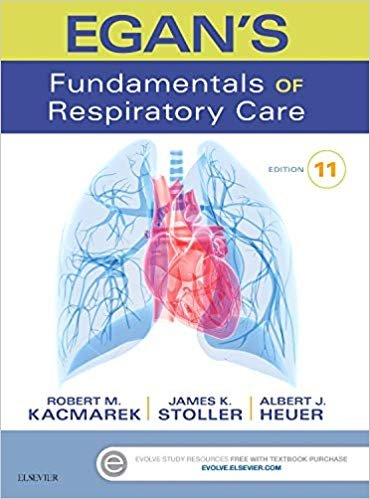
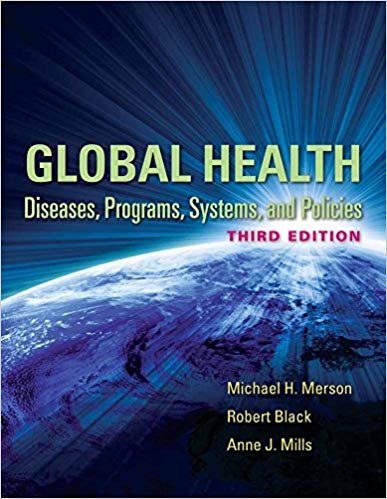
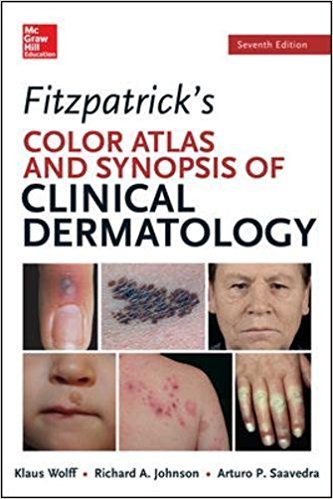
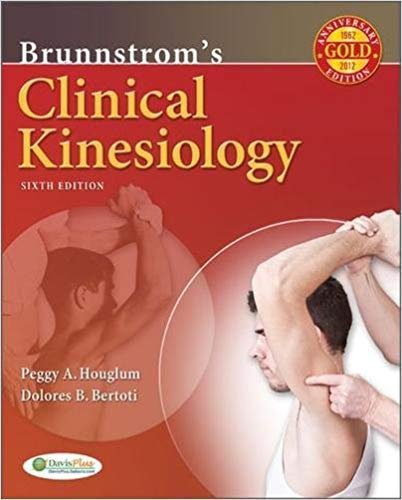


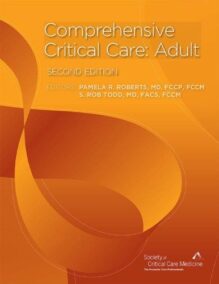
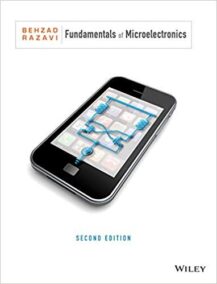


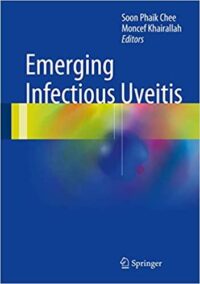


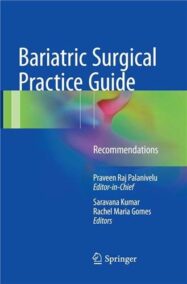

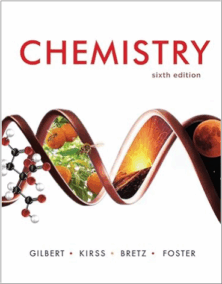
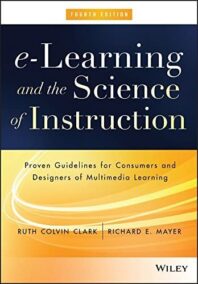

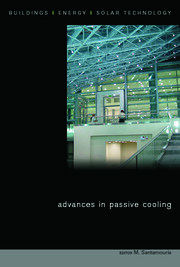
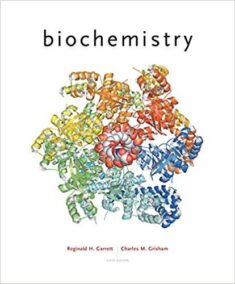

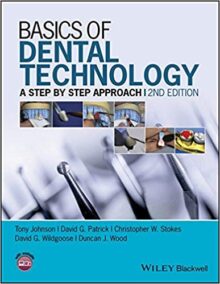


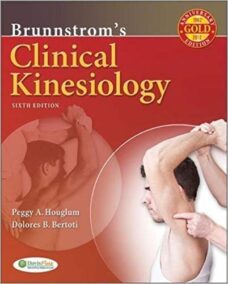
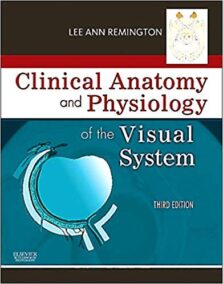
Reviews
There are no reviews yet.